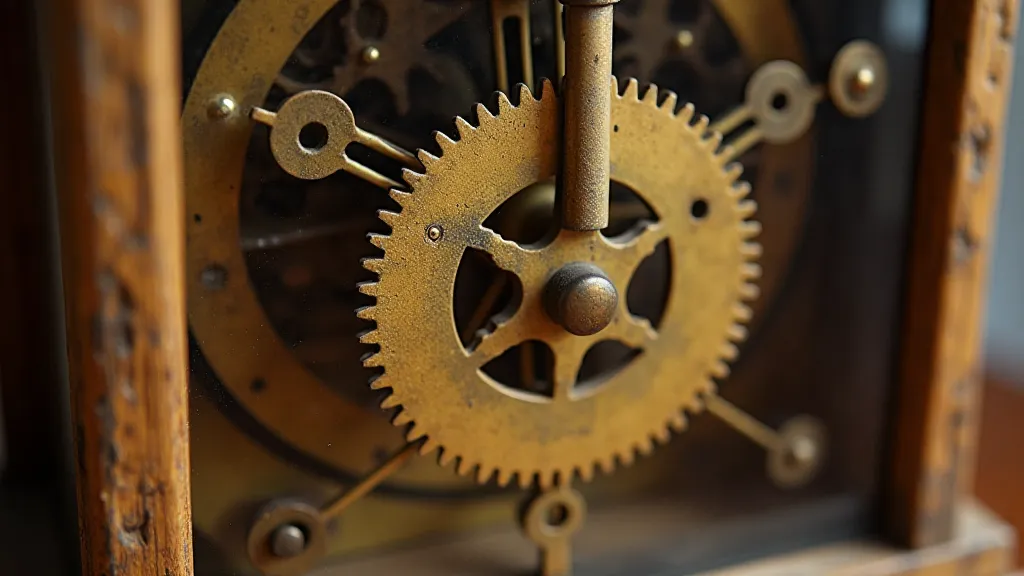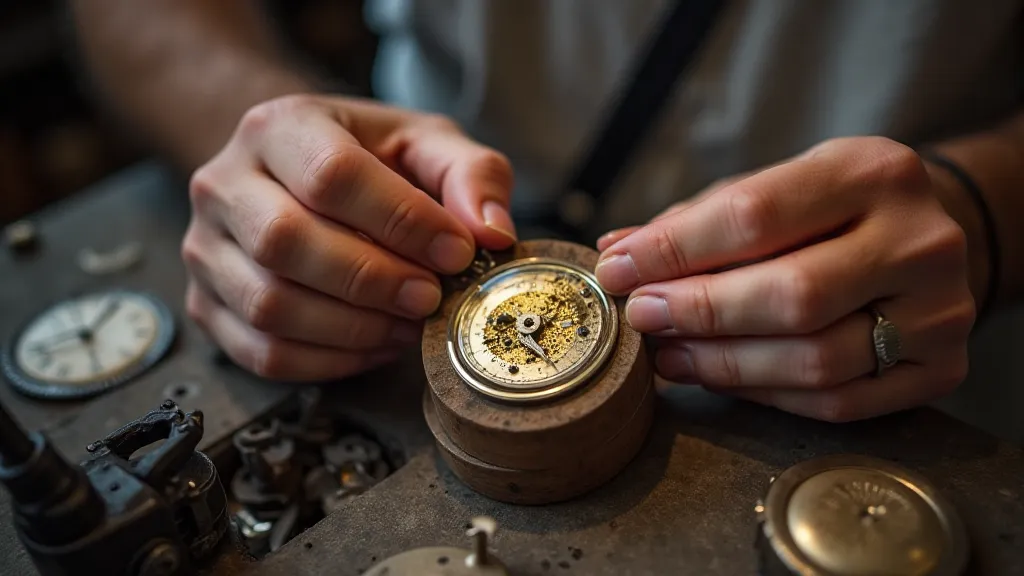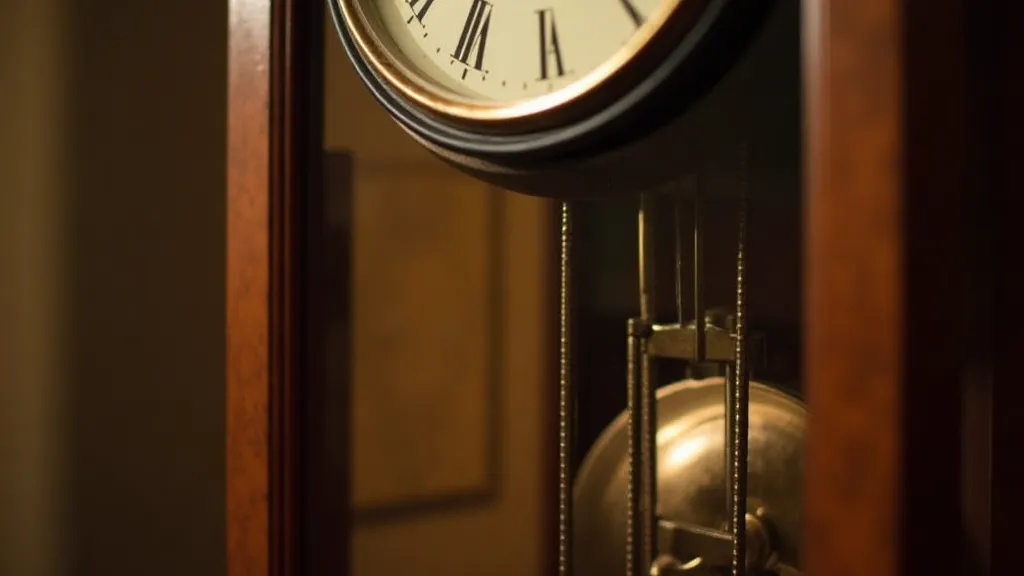The Quiet Language of Escapements: Understanding the Heart of a Clock
There’s a certain magic to antique clocks. It’s not just about telling time; it’s about holding a piece of history in your hands, a tangible connection to the craftsman who painstakingly assembled it, the families it marked milestones for, and the rhythm of life in a bygone era. But the true poetry lies within – in the quiet, almost imperceptible dance of the escapement. It’s the heart of the clock, and understanding it unlocks a deeper appreciation for these mechanical wonders.
I remember my grandfather’s grandfather clock. It wasn's a particularly ornate piece – a simple mahogany case, a clean face with Roman numerals. But its presence dominated the hallway, a steady tick-tock the backdrop to countless family gatherings. I’m fairly certain I was more fascinated by the pendulum's hypnotic sway than by the actual time it displayed. That fascination eventually led me to clocks, to their mechanisms, and to the astonishing ingenuity of the escapement.
The Escapement: More Than Just a Mechanism
Simply put, the escapement is the component responsible for releasing the mainspring’s energy in controlled, measured intervals, propelling the clock's hands forward. It’s the critical link between the clock's power source and its timekeeping display. But it's so much more than just a mechanism; it's the voice of the clock, shaping its character and influencing its overall sound.
Imagine a coiled spring, eager to unwind. Without the escapement, it would release its energy in a chaotic burst, rendering the clock useless. The escapement regulates this release, allowing the gears to advance in precise increments. It does this through a clever interplay of levers, pallets, and a toothed escape wheel – a process that’s been refined over centuries.

Historical Context: From Verge to Anchor
The evolution of the escapement is a fascinating journey through horological history. Early clocks, dating back to the 14th century, primarily utilized the verge escapement – a relatively simple design that, despite its limitations, marked a crucial step in timekeeping. Verge escapements are known for their distinctive ‘tick-tock’ sound, the ‘tick’ representing the release of energy and the ‘tock’ representing the return. They were susceptible to inaccuracies, heavily influenced by friction and environmental factors.
The 17th century witnessed the introduction of the anchor escapement, a significant improvement over the verge. Developed by Christiaan Huygens, it offered increased accuracy and a quieter operation. The anchor escapement utilizes a pallet fork that engages with the escape wheel, allowing for a more controlled and efficient release of energy. Its design minimized the impact of friction and provided a more consistent pace. The craftsmanship required to create these intricate cases and mechanisms often dictated the overall style; you can learn more about the evolution of these styles by exploring From Cabinet to Chronometer: The Evolution of Antique Clock Case Styles.
Later advancements included the deadbeat escapement, the cylinder escapement, and countless variations – each striving to enhance accuracy and efficiency. The choice of escapement often dictated the clock's overall design and its intended purpose. A high-end carriage clock would demand a more sophisticated escapement than a simple farmhouse clock.
The Sound Signature: Listening to the Clock’s Soul
One of the most compelling aspects of antique clocks is their sound. Each escapement creates a unique acoustic signature. The familiar "tick-tock" of a verge escapement is rustic and charming, evoking a sense of history. The smoother, less pronounced sound of an anchor escapement speaks of refinement and precision.
Listen carefully to an antique clock. The sound isn’s just a mechanical noise; it’s a reflection of the clock's history, its construction, and its ongoing journey. A clock that’s been neglected might sound harsh and uneven, while a well-maintained piece will offer a melodious, almost hypnotic rhythm. The rhythms and movements within these timepieces can truly inspire, and many find solace and creativity by simply observing their elegant sway – as described in The Pendulum's Whisper: Finding Rhythms in Clock Restoration. This process, like restoring the original finishes, can be surprisingly intricate.
When restoring antique clocks, preserving the original escapement is paramount. Replacing it with a modern equivalent might improve accuracy, but it would fundamentally alter the clock’s character, silencing its unique voice. The goal is to gently clean, lubricate, and adjust the original mechanism, allowing it to function as the craftsman intended.

Collecting and Restoration: Appreciating the Craftsmanship
For collectors, understanding the escapement is crucial. It’s a window into the clock's age, its origin, and its overall quality. A clock with a rare or innovative escapement is often more valuable – both financially and historically.
Restoring antique clocks is a delicate art. It requires patience, skill, and a deep respect for the original craftsmanship. A restorer isn’t just fixing a broken clock; they're preserving a piece of history, ensuring that it continues to tell its story for generations to come. The subtle adjustments required to the escapement – the precise alignment of the pallets, the delicate balance of the lever – can make the difference between a clock that simply tells time and a clock that sings. The mesmerizing sway of the pendulum itself contributes to the overall experience and can hold significant beauty; examining its intricacies provides insight into the broader restoration process as discussed in The Pendulum's Whisper.
The challenges are numerous. Finding replacement parts can be difficult, and the knowledge required to diagnose and repair complex escapements is often passed down through generations of clockmakers. But the rewards are immeasurable – the satisfaction of bringing a silent clock back to life, of hearing its voice once again, and of connecting with the past.
Beyond the Gears: A Lasting Legacy
The escapement, often overlooked by casual observers, is the silent conductor of the clock's symphony. It embodies the ingenuity and artistry of the clockmakers who came before us. It’s a reminder that timekeeping isn’t just about minutes and seconds; it’s about history, craftsmanship, and the enduring power of human creativity. The intricacies of these devices also extend to their casings and construction, influencing the overall aesthetic and historical significance.
So, the next time you encounter an antique clock, take a moment to listen. Imagine the hands that crafted it, the lives it marked, and the generations who relied on its steady rhythm. And appreciate the quiet language of the escapement – the heart of the clock, and the soul of its story.

Understanding the history of timekeeping and the mechanisms that drive it can be truly captivating. From the earliest water clocks to the most advanced chronometers, the human quest to measure and understand time has driven remarkable innovation. The precision required for accurate timekeeping has also influenced other fields, such as navigation and astronomy, leading to a deeper understanding of our place in the universe. The beauty of these instruments lies not only in their functionality but also in the artistry and dedication of the craftspeople who created them. They represent a connection to the past and a testament to human ingenuity.
Furthermore, the preservation of these historical clocks goes beyond mere mechanical repair; it's about safeguarding cultural heritage. Each clock tells a story, reflecting the social, economic, and technological context of its time. By restoring and maintaining these timepieces, we ensure that these stories continue to be told for generations to come. The meticulous work involved in clock restoration requires a deep understanding of horological history, mechanical engineering, and artistic conservation. It’s a craft that demands patience, skill, and a passion for preserving the past.
The evolution of clock escapements, in particular, highlights the ingenuity and adaptability of human innovation. The knowledge and skillset needed for A Tapestry of Time is truly remarkable.
So, the next time you encounter an antique clock, take a moment to listen. Imagine the hands that crafted it, the lives it marked, and the generations who relied on its steady rhythm. And appreciate the quiet language of the escapement – the heart of the clock, and the soul of its story.





